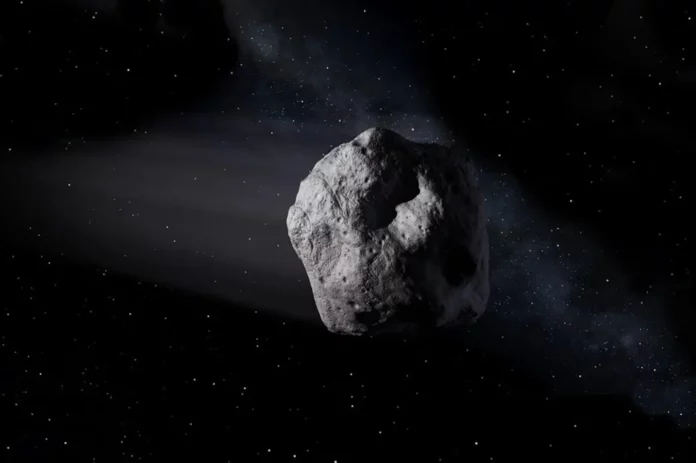2024 YR4 is a newly discovered asteroid that could collide with the Earth, and its chances of hitting our planet in 2032 are definitely greater than zero.
The probability that the asteroid will hit the Earth is 1.2%, based on very preliminary calculations. That means – obviously – a 98.8% chance that the rocky object will fly by. But those odds are still very high, so let’s take a look at what we know about the newly discovered asteroid.
The Asteroid Impactor Late Alert System (ATLAS) first detected 2024 YR4 on December 27, 2024. At the time, the asteroid was 515,116 miles (829,000 kilometers) from Earth. The asteroid is currently moving away from our planet, but its next close approach will take place in December 2028.
As noted, the current probability of a collision with the asteroid of 1 in 83 is preliminary; astronomers will refine these estimates over time as they collect more data. According to the Center for Near-Earth Object Studies at NASA‘s Jet Propulsion Laboratory, the calculated probability of a collision “can easily be inaccurate by a factor of several, and sometimes by a factor of ten or more.” So with that caveat in mind, let’s dive into 2024 YR4 and see what kind of danger it might pose to our pale blue dot.
CNEOS reports that the asteroid is 180 feet (55 meters) across, and its speed during a (potential) collision is estimated at 10.76 miles per second (17.32 kilometers per second). The center reports six different possible collision events between 2032 and 2074, with the highest probability of a collision occurring in 2032 – December 22 of that year, to be exact. Feel free to mark your calendars. It’s important to note that the probability decreases with each subsequent asteroid flyby, and only the date 2032 corresponds to a risk level 3 on the Torino scale.
According to the Torino Impact Hazard Scale, a way of measuring the danger posed by asteroids, 2032 YR4 deserves the attention of astronomers because it is less than ten years away from impact, but a collision with Earth is hardly a certainty. The object’s Tier 3 rating also means that “current calculations give a 1% or greater chance of a collision that could cause localized destruction,” the CNEOS website says. However, “Most likely, new telescopic observations will lead to the reassignment of the object to level 0,” i.e., “Not a hazard.” We very much hope that this will happen.
Potentially dangerous asteroids (or NEOs) are a common occurrence in our part of the solar system. Despite their name, asteroids rarely pose a threat to Earth, but are objects large enough to survive re-entry into the Earth’s atmosphere.
Although an asteroid is not large enough to pose a global threat, it will still release a huge amount of energy if it collides with the Earth. According to NASA, an asteroid impact would release about 8 megatons of energy – more than 500 times the energy released by the atomic bomb dropped on Hiroshima in 1945 and comparable to the energy released during the Tunguska explosion in 1908.
According to EarthSky, the only other asteroid to receive a higher rating on the Turin scale is 99942 Apophis, which was briefly classified as a level 4 on the Turin scale in 2004. Since then, the threat from Apophis has been downgraded to zero on the scale, as astronomers have ruled out any significant risk of collision with it over the next 100 years.
The asteroid’s characteristics – its speed, size, heck, even its mass – may change as scientists continue to monitor its trajectory in space. The situation may turn out to be less threatening, but it may also become more alarming when the asteroid returns to our planet.
One thing is for sure: it is extremely important for scientists to keep an eye on the dynamic sky filled with objects that could pose the same existential threat to humanity as another asteroid did to the dinosaurs some 66 million years ago. That’s why NASA demonstrated the ability to redirect an asteroid back in 2024 – hopefully scientists will never have to use this skill, but it’s reassuring to have it.









